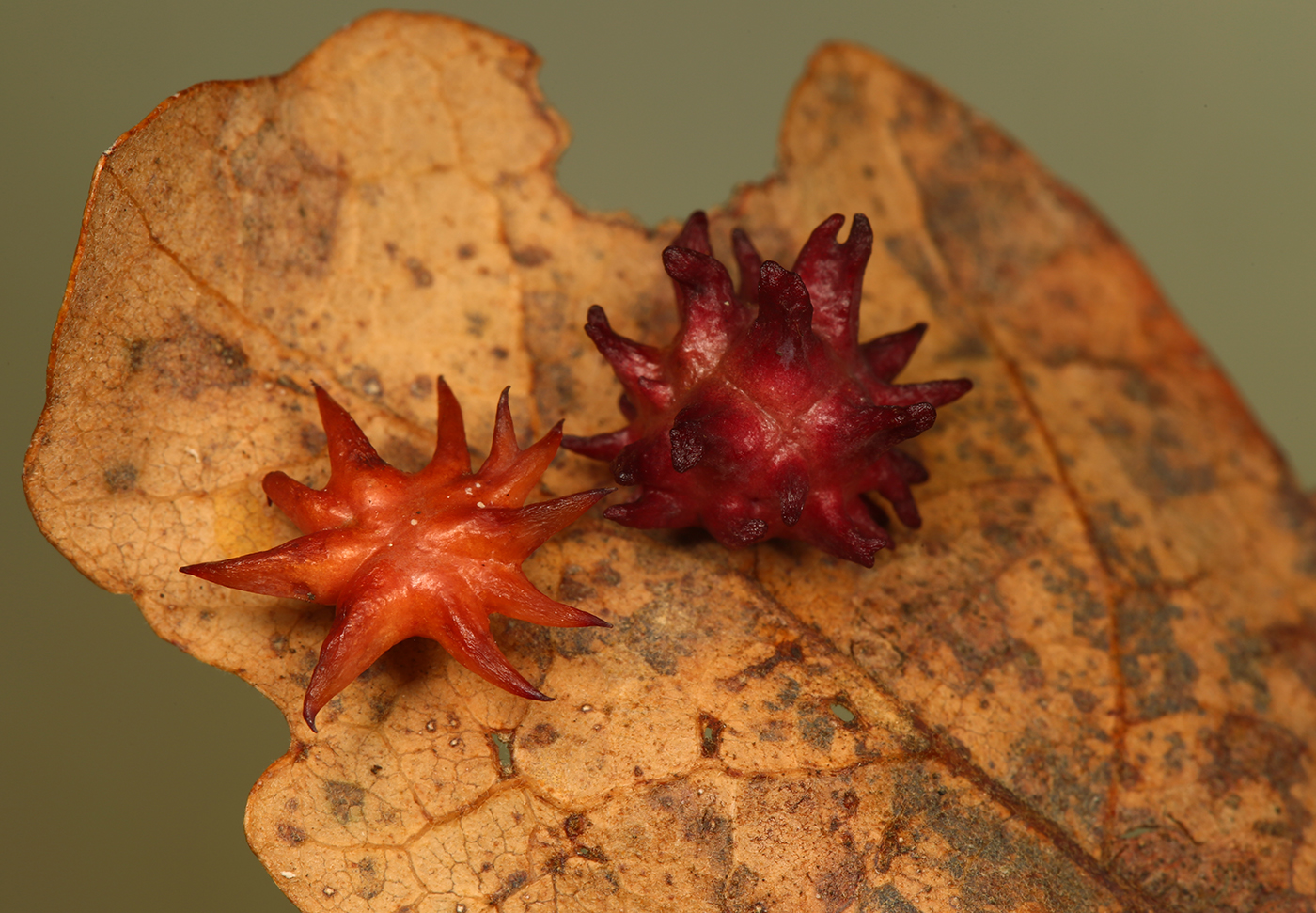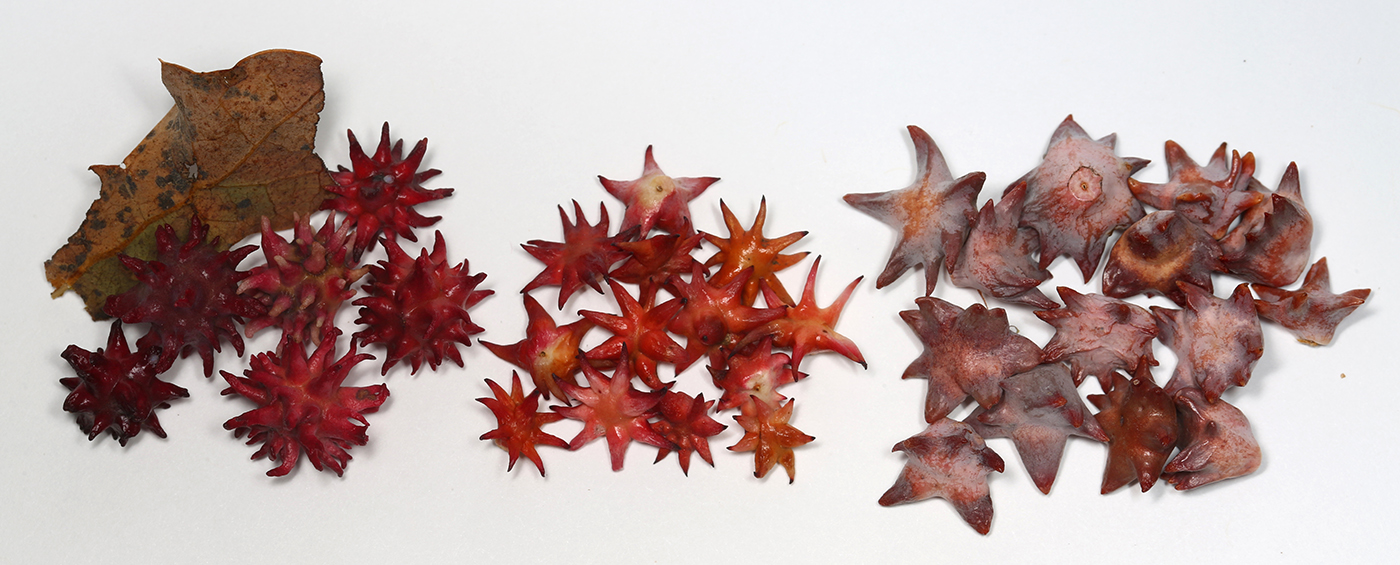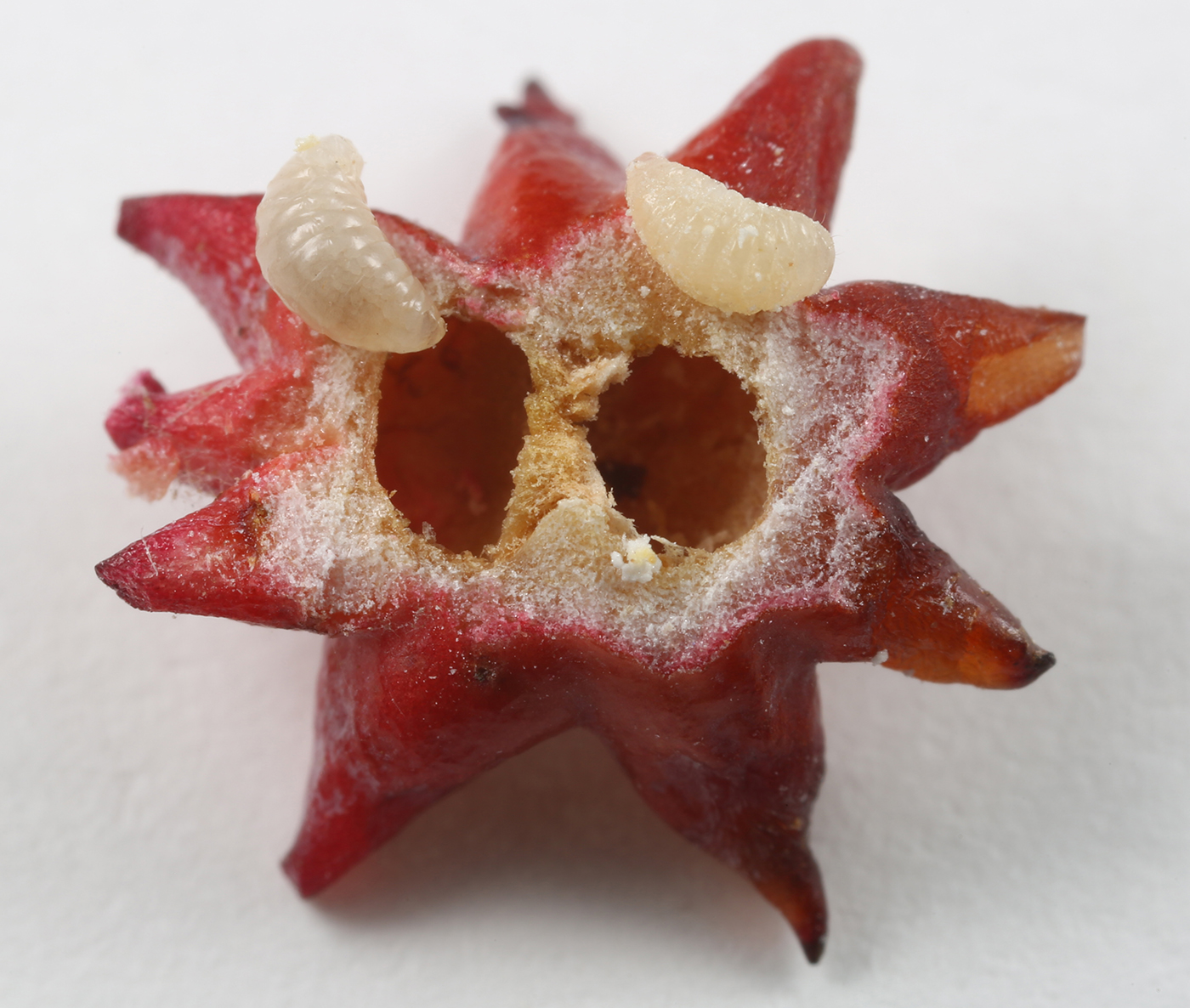|
August 2020
Since 2006, I've been unsure if the galls in the image below are Antron douglasii or Antron quercusechinus. (Current genus is Cynips if you follow Melika & Abrahamson 2002.) These are very distinctive galls that I've only seen on blue oak (Quercus douglasii). Quercus douglasii (blue oak) is host to both Antron douglasii or Antron quercusechinus galls. Quercus lobata (valley oak) is host to Antron douglasii but apparently not to Antron quercusechinus. Antron douglasii gall shape seems to be varied depending on oak host species. For example, on scrub oak (Quercus berberidifolia) the Antron douglasii gall shape often seems rounder with much less pronounced "points" than they appear on Quercus douglasii. In 2007, Kathy Schick and I thought the above galls were most likely induced by Antron quercusechinus. Ron Russo thought they were more likely Antron douglasii galls, maybe altered by inquilines or parasitoids. Or, Ron wrote, they may be some other variety that Kinsey described. (Ron might be referring to Kinsey 1930 "The Gall Wasp Genus Cynips"?) Ron seemed pretty sure in 2007 that they were not Antron quercusechinus galls, though.
Here's an image of a "normal" Antron quercusechinus gall (on the right) next to one of these odd galls (on the left).
In 2017 I collected "normal" Antron quercusechinus and Antron douglasii galls, and also some of these odd galls. Below is a photo showing them sorted into piles, so you can see similarities and differences within each group, and also across groups.
Antron quercusechinus (left); mystery galls (middle); Antron douglasii (right).
Here's an image of a normal Antron quercusechinus gall, one of the mystery galls, and an Antron douglasii gall.
I cut open a few of the mystery galls. In every case, there were two larval chambers. One seemed to contain a cynipid (probably the inducer, but there can also be inquiline cynipids, and the larvae may look the same to me as the inducers). The other chamber had what looked to be a parasitoid wasp larva. Both Antron quercusechinus and Antron douglasii are monothalamous galls (one inducer larva per gall), so these galls with two larval chambers are not "normal" (though it's extremely common for galls to contain inquilines, parasitoids, and hyperparasitoids!).
Below is an image of one of these cut open galls. The non-cynipid wasp larva is on the right. It has hairs, which cynipid larvae do not have.
It is strange that each larva has its own larval cell. Normally a parasitoid wasp is in the same cell as the wasp it is parasitizing. I couldn't
figure out what the hairy larva was eating. Maybe it was an inquiline not a parasitoid? My dissections brought up more questions than answers.
I'm pretty sure that whoever the inducer species is, the growth of these oddly-shaped galls has been altered by occupants that are not the inducer wasps. I've changed the name on this gall back and forth between Antron quercusechinus and Antron douglasii several times over the years. This month, I think they are more likely Antron quercusechinus galls with altered growth due to the presence of a non-inducer inside the galls. But I'm not sure. Rearing occupants from these galls and examining adults would provide more information. I did rear (20+?) wasps from these galls in 2017, but got side-tracked with the CA Insects book and haven't had time yet to examine the wasps. Soon, hopefully. |




